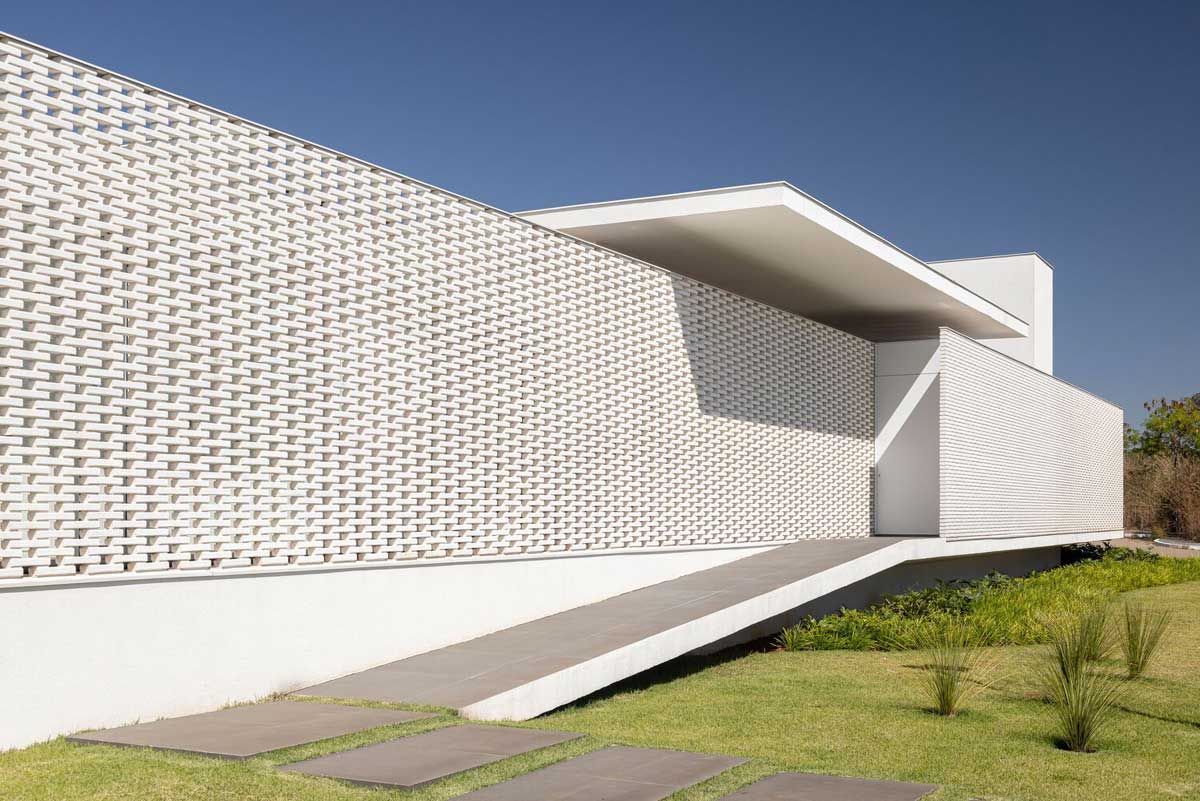The modern tropical house design is a unique blend of nature and architecture, a harmonious fusion that creates a serene and tranquil living environment. This article explores the five key elements that define this architectural style, using the White Bricks House by BLOCO Arquitetos as a case study.



Element 1: Artisanal Construction
The first key element of modern tropical house designs is the artisanal construction process. The White Bricks House was built in an extremely artisanal way by masons-craftsmen, in a slow and precise process. This method, although not very widespread in Brasília nowadays, requires precision and constructive refinement, elements that are very present in the most representative public buildings of Brasilia. The use of exposed solid bricks adds a rustic charm to the house, while also showcasing the craftsmanship and skill of the builders. The artisanal construction process results in a home that is not just a living space, but a work of art.



Element 2: Integration with Nature
The second element is the integration with nature. The house’s program was distributed around the perimeter of the plot so that all the main rooms of the house could face the central area, with a large green area and a semi-Olympic lap pool. Bedrooms, living rooms, verandas, kitchen, and even the garage were directed towards the large garden environment that functions as a central patio. This design allows the residents to enjoy the beauty of the outdoors from every room in the house. The integration with nature extends beyond just the views – the house is designed to take advantage of natural light and ventilation, reducing the need for artificial lighting and air conditioning.



Element 3: Use of Local Materials
The third element is the use of local materials. The White Bricks House is constructed with solid bricks, a material that is not very common in Brasília today. However, the use of this material adds a local touch to the house, connecting it with the architectural history of the region. The bricks are painted white, giving the house a clean, modern look while still maintaining the rustic charm of the brick.


Element 4: Privacy and Openness
The fourth element is the balance between privacy and openness. The facades of the White Bricks House are covered by an outer layer of solid bricks painted white. The different degrees of openness are formed by the variable spacing between the bricks. The level of visibility through the bricks reflects the different levels of privacy that are desired for each room. The “hollow” spaces between the bricks also allow for natural cross-ventilation, adding to the house’s energy efficiency.


Element 5: Cultural References
The fifth and final element is the incorporation of cultural references. The spaced bricks reinterpret one of the most relevant architectural elements in Brasilia, the “cobogó” (breezeblock), which is so important for ventilation and natural lighting in Brazilian architecture. This design element not only serves a practical purpose but also connects the house with the cultural and architectural heritage of Brazil.


Conclusion
Modern tropical house designs, as exemplified by the White Bricks House, are a testament to the beauty of artisanal construction, the harmony of integrating nature, the charm of local materials, the balance of privacy and openness, and the richness of cultural references. These elements come together to create a living space that is not just functional and comfortable, but also deeply connected with its surroundings and heritage.












